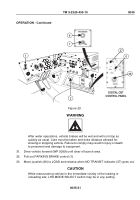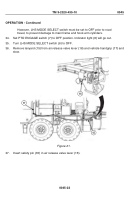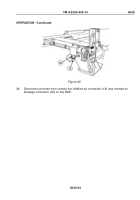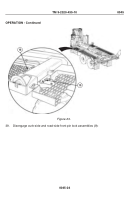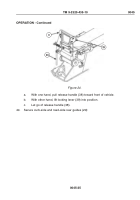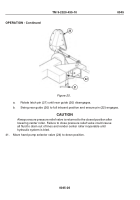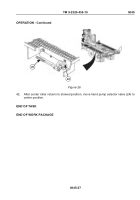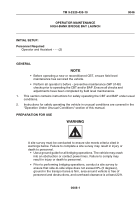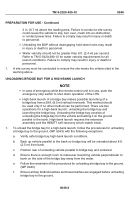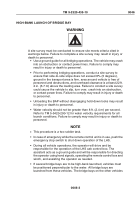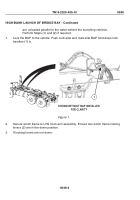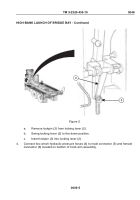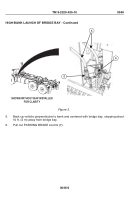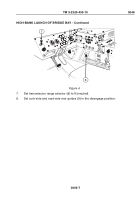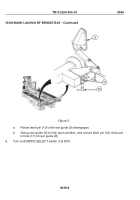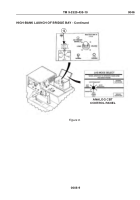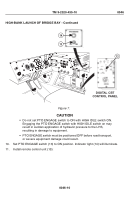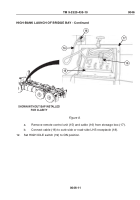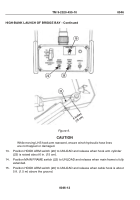TM-9-2320-435-10 - Page 355 of 1168
HIGH-BANK LAUNCH OF BRIDGE BAY
WARNING
A site survey must be conducted to ensure site meets criteria cited in
warnings below. Failure to complete a site survey may result in injury or
death to personnel.
•
Use a ground guide for all bridging operations. The vehicle may crash
into an obstruction or contact power lines. Failure to comply may
result in injury or death to personnel.
•
Prior to performing bridging operations, conduct a site survey to
ensure that side-to-side slope does not exceed 8% (5 degrees),
ground in the transport area is firm, area around vehicle is free of
personnel and obstructions, and overhead clearance is at least 22 ft.
2 in. (6.7 m) above the loading area. Failure to conduct a site survey
could cause the vehicle to slip, turn over, crash into an obstruction,
or contact power lines. Failure to comply may result in injury or death
to personnel.
•
Unloading the BAP without disengaging hold-down locks may result
in injury or death to personnel.
•
Water velocity should not be greater than 8 ft. (2.4 m) per second.
Refer to TM 5-5420-290-12 for water velocity requirements for all
launch conditions. Failure to comply may result in injury or death to
personnel.
NOTE
•
This procedure is a two soldier task.
•
In case of emergency while the remote control unit is in use, push the
emergency stop switch to shut down operation of the LHS.
•
During all vehicle operations, the operator will drive and be
responsible for the operation of the LHS cab control box. The
assistant acts as a ground guide and will be responsible for directing
the operator using hand signals, operating the remote control box and
winch, and assisting the operator as needed.
•
If several bridge bays are to be high-bank launched, vehicles must
be positioned perpendicular to the water. All bridge bays are
launched from these vehicles. The bridge bays on the other vehicles
TM 9-2320-435-10
0046
0046-3
Back to Top

